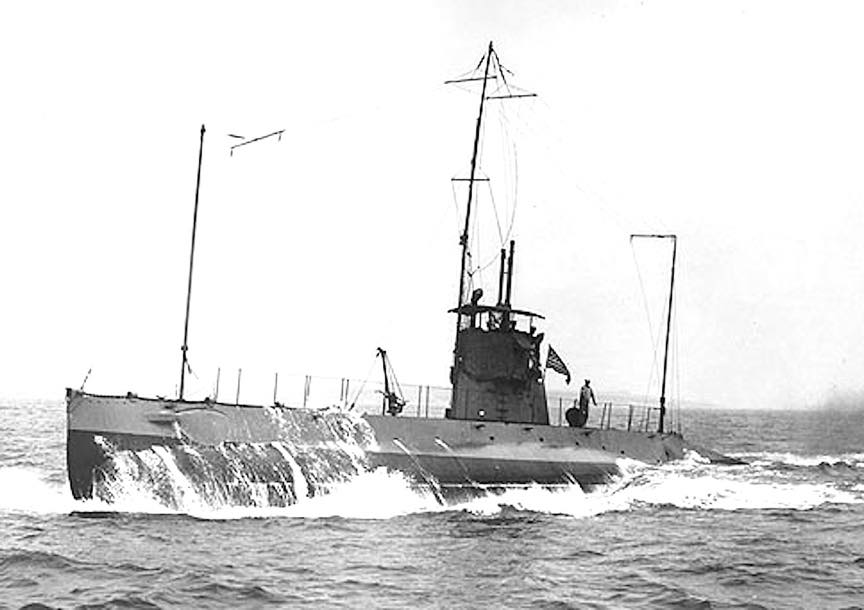K-1 SS-32

K—I
I
(SS-32: dp. 392 (surf.), 521 (subm.), 1. 153'7", b. 16'8"
dr. 13'1", s. 14 k. (surf.), 10.5 k. (subm.); cpl. 28, a.
4 18" tt.; cl. R)
On 17 November 1911 while under construction TTaddock (SS-32) was renamed K-1 and launched 3 September 1913 by the Fore River Shipbuilding Co., Quincy, Mass.; sponsored by Mrs. Albert Ware Marshall and commissioned 17 March 1914, Lt. (j.g.) E. F. Cutts in command.
Upon completion of 6 months training, K-l joined the 4th Division Atlantic Torpedo Flotilla, Newport, R.I., 9 October 1914. The submarine departed New York 19 January for underwater development training out of Key West. She continued operations along the East Coast for almost 3 years, aiding in the development of subma ripe-warfare tactics. The techniques learned from these experiments were soon put into practice when German U-boats interfered with Allied shipping bound for Europe.
K-1 departed New London 12 October 1917, arriving Ponta Delgada 15 days later to conduct patrol cruises olf the Azores. For the duration of the war she conducted patrol cruises off the Azores and searched for the enemy U-boats, and protected shipping from surface attack.
Upon cessation of hostilities 11 November 1918, the submarine arrived Philadelphia 13 December to resume coastal operations.
From 1919 to 1923 K-1 cruised along the Atlantic coast from New England to Florida conducting experimental exercises. The development of submarines was greatly accelerated through the technology learned from these experiments. New listening devices, storage batteries, and torpedoes were tested, and their later adoption contributed greatly to continued American strength on the seas. K-1 arrived Hampton Roads 1 November 1922 and remained until she decommissioned 7 March 1923. She was sold as scrap 25 June 1931.
The second K-1 was renamed Barracuda (q.v.) 15 December 1955.
